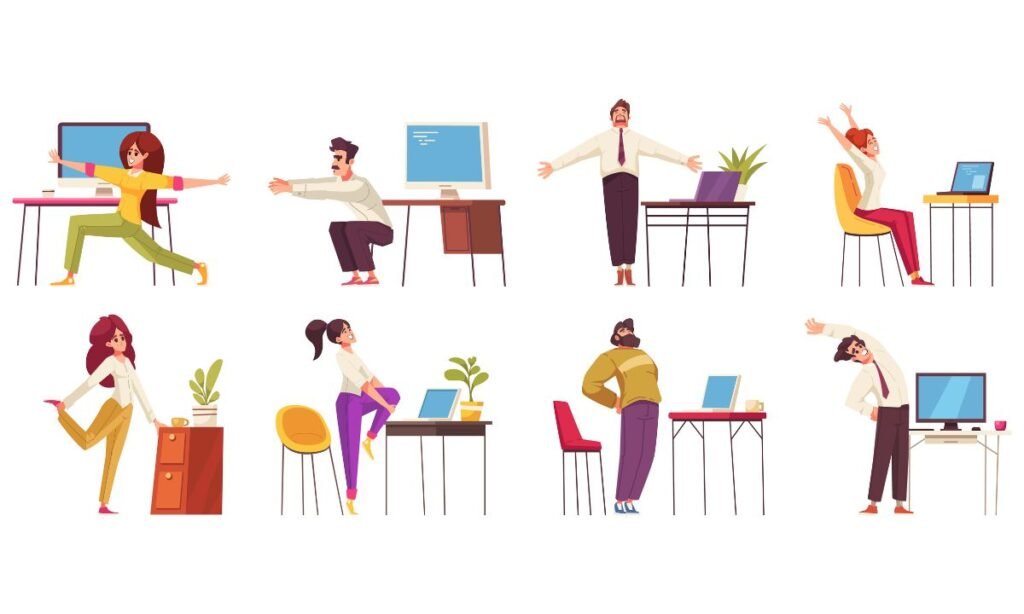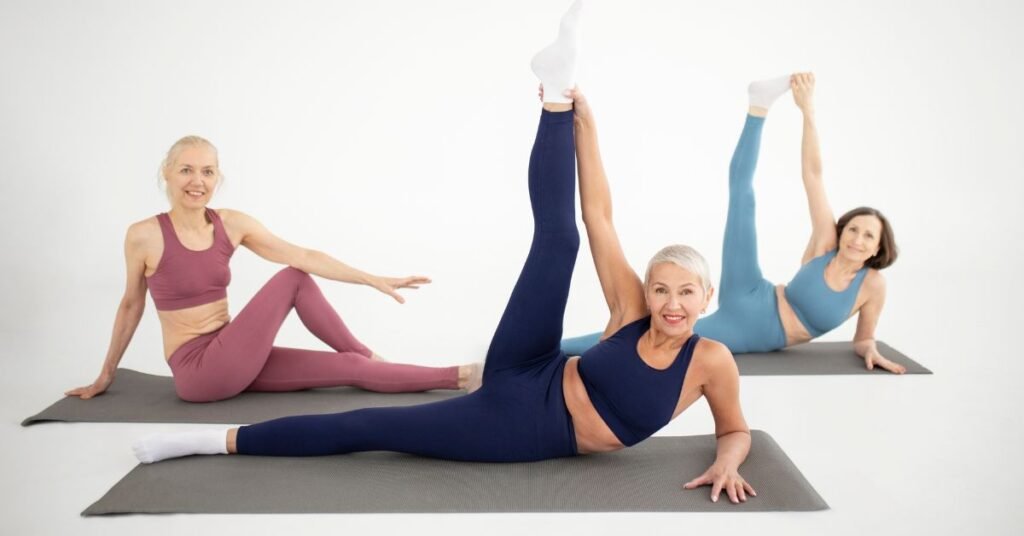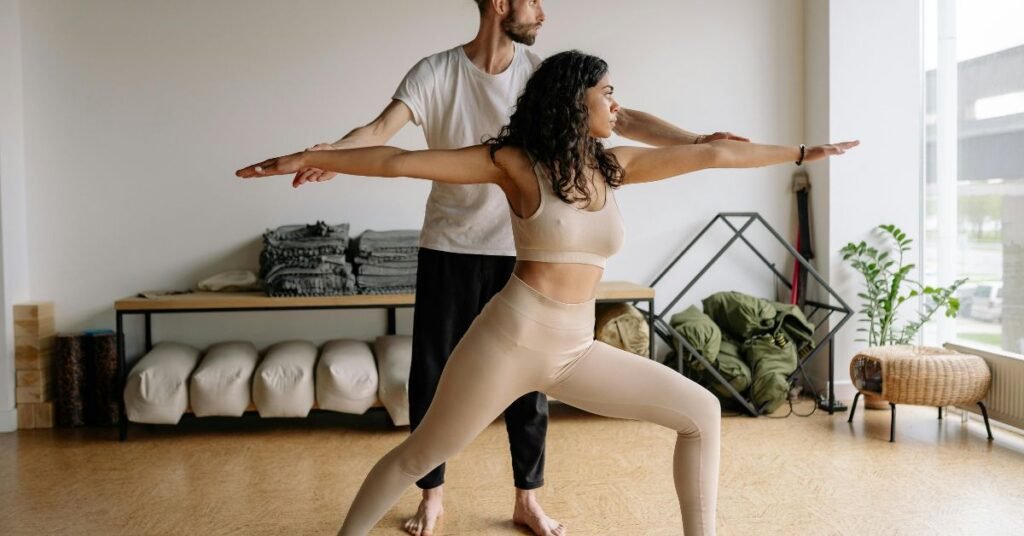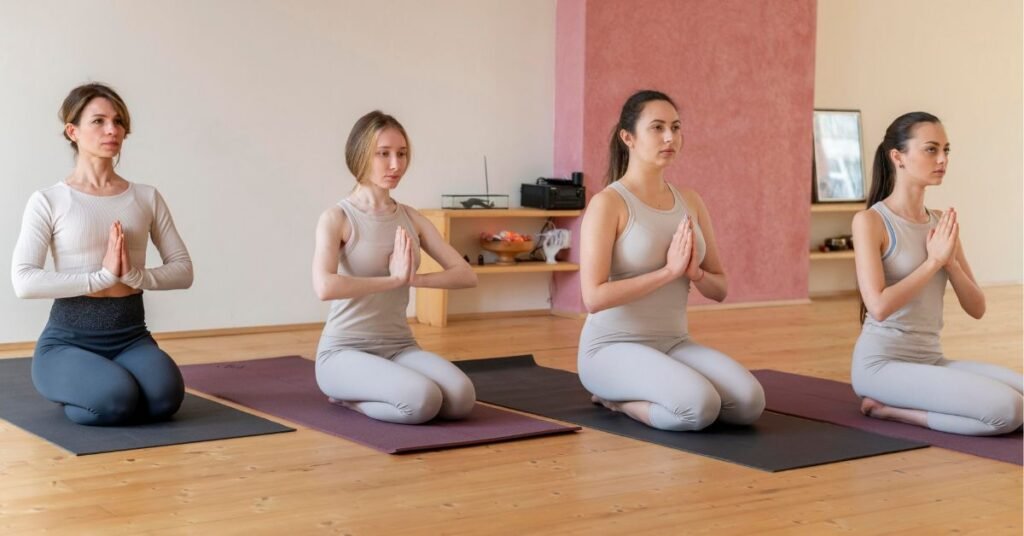Sitting at a desk all day might be unavoidable, but the aches, stiffness, and poor posture that come with it don’t have to be. Whether working from home, commuting to the office, or clocking long hours on your laptop, prolonged sitting can take a toll on your body. Tight hips, sore backs, and slouched shoulders are just a few of the issues that arise when your body doesn’t move enough.
The good news? Yoga is here to save the day! Even just a few minutes of targeted stretches can make a big difference in how you feel by the end of your workday. In this post, we’ll cover five yoga poses that can counteract the effects of sitting at a desk all day, boost your energy, and improve your posture. Whether you’re a yoga newbie or an experienced yogi, these poses are simple, effective, and perfect for everyone.
So grab your mat (or a clear spot on the floor) and let’s stretch it out!
Why Sitting All Day Is a Problem
Before we dive into the poses, let’s talk about why sitting all day is such a big deal. When you spend hours in the same seated position, your muscles can become tight and imbalanced. Here are some common issues caused by sitting:
- Tight hip flexors: These muscles stay shortened when seated, leading to stiffness and reduced mobility.
- Weak glutes: Prolonged sitting can cause your glute muscles to weaken, which affects your overall stability and posture.
- Back pain: Sitting for long periods strains your lower back, especially if you’re not using proper posture.
- Neck and shoulder tension: Hunching over your desk or screen can lead to tight shoulders and a forward head posture.
- Reduced circulation: Staying seated for too long can slow down blood flow, leading to swollen legs or feet.
Yoga helps counteract these problems by stretching tight muscles, strengthening weak ones, and improving circulation. Plus, it gives you a mental break, which we all need after a stressful day.
1. Cat-Cow Pose (Marjaryasana-Bitilasana)
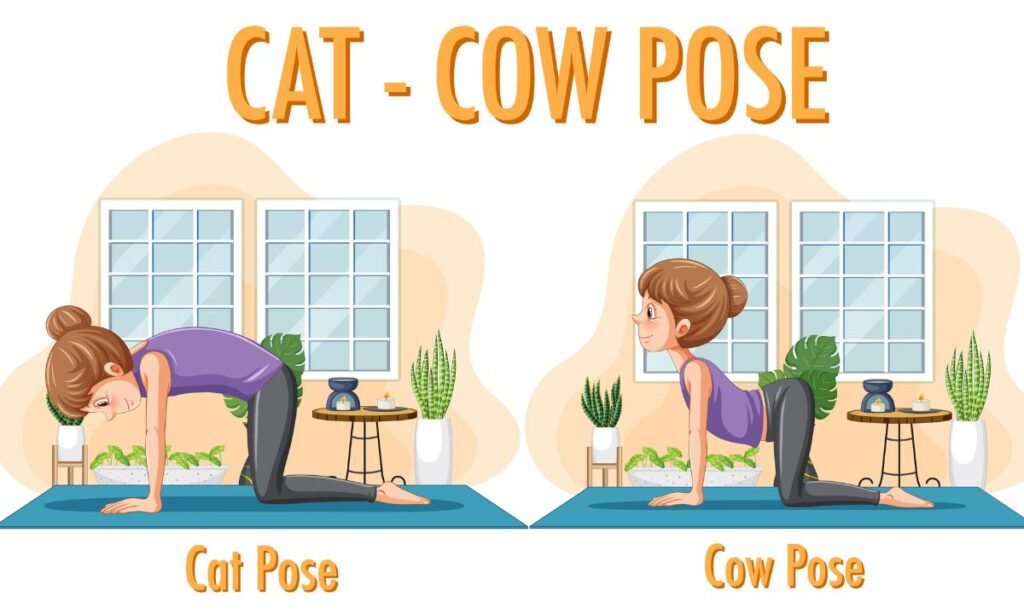
Cat-Cow is a gentle flow between two poses that warms up your spine, improves flexibility, and relieves tension in your back, neck, and shoulders.
How to Do It:
- Start on your hands and knees in a tabletop position. Align your wrists under your shoulders and your knees under your hips.
- Inhale as you arch your back, drop your belly toward the floor, and lift your head and tailbone (Cow Pose).
- Exhale as you round your spine, tuck your chin to your chest, and draw your belly button toward your spine (Cat Pose).
- Repeat this flow for 5-10 breaths, moving slowly and mindfully.
Why It Helps:
Cat-Cow improves spinal mobility, stretches the back and neck, and encourages better posture. It’s also a great way to wake up your body if you’ve been sitting still for hours.
2. Downward-Facing Dog (Adho Mukha Svanasana)
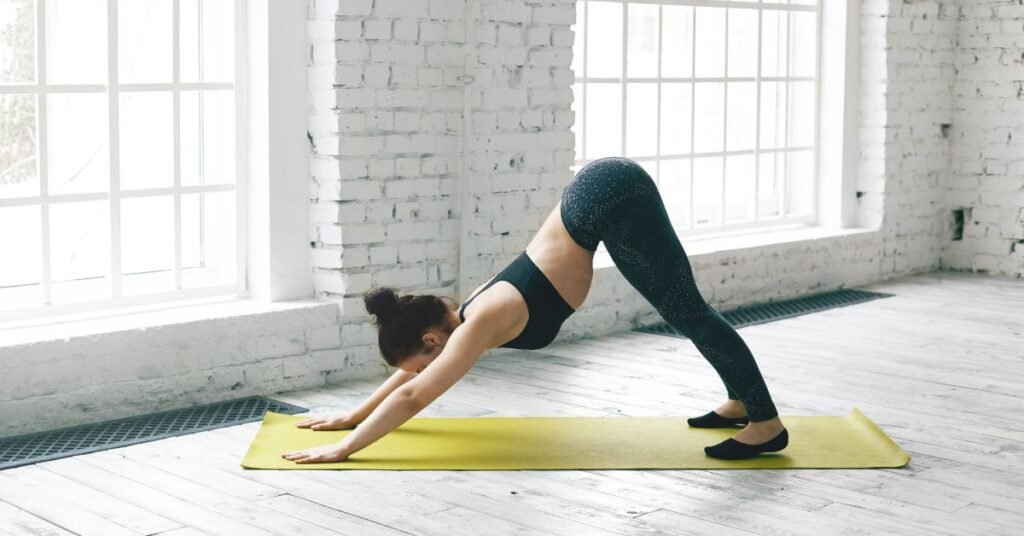
Downward Dog is a classic yoga pose that stretches your entire body, especially your hamstrings, calves, and shoulders.
How to Do It:
- Start in a tabletop position with your hands and knees on the floor.
- Tuck your toes under and lift your hips toward the ceiling, straightening your legs as much as you can.
- Spread your fingers wide and press firmly into the mat. Keep your head relaxed between your arms.
- Hold for 5-10 breaths, focusing on elongating your spine and stretching the backs of your legs.
Why It Helps:
This pose reverses the forward hunch of sitting by opening up your shoulders and chest. It also stretches your hamstrings and calves, which can become tight from sitting.
3. Low Lunge (Anjaneyasana)

Low Lunge stretches your hip flexors, strengthens your legs, and improves balance.
How to Do It:
- Start in a tabletop position or Downward Dog.
- Step your right foot forward between your hands, aligning your knee over your ankle.
- Lower your left knee to the floor and untuck your toes.
- Place your hands on your right thigh or lift them overhead for a deeper stretch.
- Hold for 5-10 breaths, then switch sides.
Why It Helps:
This pose targets the hip flexors, which are often tight from sitting. It also strengthens your legs and encourages an upright posture.
Readmore: King Cobra Pose (Raja Bhujangasana)
Readmore: 15 Best Heart-Opening Yoga Poses
4. Seated Spinal Twist (Ardha Matsyendrasana)

Twisting poses are great for releasing tension in your spine and improving mobility.
How to Do It:
- Sit on the floor with your legs extended in front of you.
- Bend your right knee and place your right foot on the outside of your left thigh.
- Place your right hand behind you for support and your left elbow on the outside of your right knee.
- Inhale to lengthen your spine, and exhale to twist deeper, looking over your right shoulder.
- Hold for 5-10 breaths, then switch sides.
Why It Helps:
This twist relieves tension in your back and shoulders while promoting spinal flexibility. It’s also a great way to reset your posture after slouching.
5. Child’s Pose (Balasana)
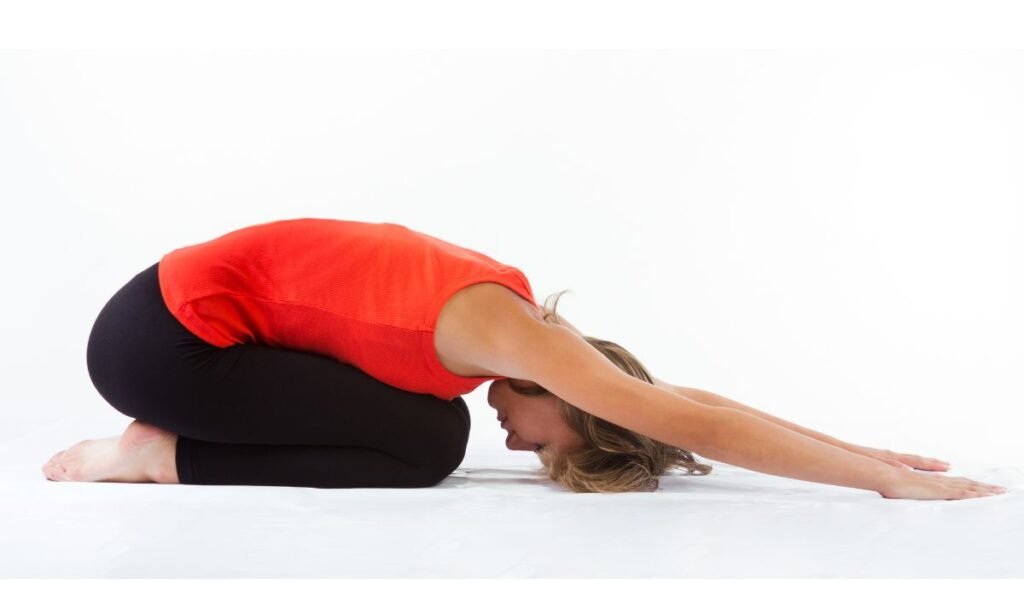
Child’s Pose is a restful pose that gently stretches your back, hips, and shoulders while calming your mind.
How to Do It:
- Start on your hands and knees in a tabletop position.
- Bring your big toes together and widen your knees.
- Sit back onto your heels and stretch your arms forward, lowering your forehead to the mat.
- Hold for as long as you’d like, taking slow, deep breaths.
Why It Helps:
Child’s Pose releases tension in your lower back and hips, which can become stiff from sitting. It’s also incredibly calming, making it perfect for winding down after a long day.
Readmore: Elephant Trunk Pose (Eka Hasta Bhujasana)
Readmore: Balancing Table Pose (Dandayamna Bharmanasana)
Tips for Adding Yoga to Your Day
- Take short breaks: Even five minutes of stretching can make a difference. Try doing one or two poses every hour.
- Use props: A yoga block, cushion, or even a rolled-up towel can make poses more comfortable and accessible.
- Focus on your breath: Deep, mindful breathing enhances the benefits of each pose and helps you relax.
- Listen to your body: If a pose feels uncomfortable or painful, back off or modify it. Yoga should feel good, not hurt.
FAQs
Q1. Do I need any special equipment?
No, you don’t need any fancy equipment. A yoga mat is helpful for comfort and stability, but you can also use a carpeted floor or a towel.
Q2. What if I’m not flexible?
No problem! Yoga is for everyone, regardless of flexibility. Use props like yoga blocks or cushions to support your body and modify poses as needed.
Q3. How long should I hold each pose?
Hold each pose for 5-10 breaths, or about 30 seconds to 1 minute. Listen to your body and adjust the duration based on what feels comfortable.
Q4. Can these poses prevent back pain?
Yes, these poses can help alleviate and prevent back pain by stretching tight muscles, improving posture, and promoting better spinal alignment.
Conclusion
Sitting for long periods is unavoidable for many of us, but the negative effects on your body don’t have to be. By incorporating these five yoga poses into your daily routine, you can counteract the stiffness, poor posture, and discomfort that come with a sedentary lifestyle.
Yoga is more than just a physical practice; it’s an opportunity to tune in to your body and mind, creating balance in both. Even just a few minutes a day can leave you feeling refreshed, energized, and ready to tackle whatever comes next. So take a break, roll out your mat, and give these poses a try. Your body will thank you!

Sonu is a passionate yoga teacher with over 6+ years of experience helping individuals find balance, strength, and inner peace through the transformative power of yoga. As the creator of Pure Yoga Vibes, Sonu shares expert insights, inspiring practices, and a wealth of knowledge to support your wellness journey. Dedicated to creating a space for growth and mindfulness, Sonu’s mission is to make yoga accessible and enjoyable for everyone. For inquiries or collaborations, feel free to reach out at contact@pureyogavibes.com.
